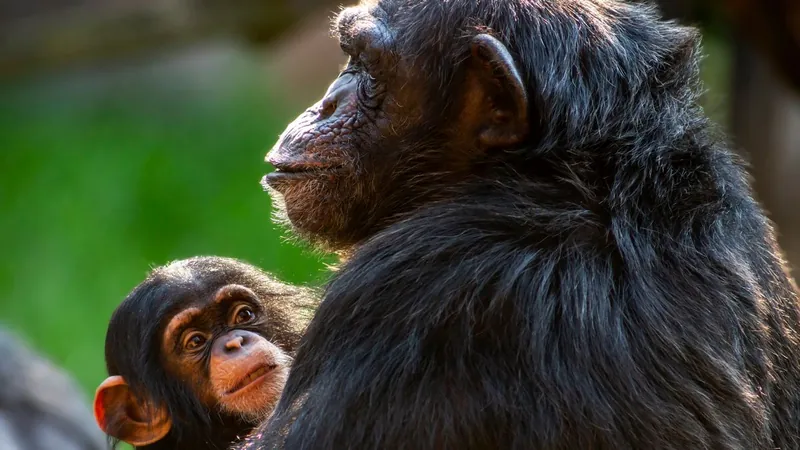
New Study Shatters Old Beliefs on Why Human Childbirth is So Difficult
2024-11-08
Author: Michael
Groundbreaking Study
A groundbreaking study analyzing the pelvic bones of chimpanzees has thrown a wrench into the long-standing theory surrounding the challenges of childbirth for humans.
Traditionally, the "obstetrical dilemma" has been thought to stem from a trade-off between the need for larger brains and the constraints of a pelvis adapted for upright walking. However, this new research suggests that such birthing difficulties predate human evolution and were even present in our common ancestors with chimpanzees.
Key Findings
Lead author Nicole Webb, a paleoanthropologist at the University of Zurich, emphasizes that australopithecines—our early ancestors—were likely already experiencing the same birth complications that humans face today, potentially requiring assistance during childbirth. This could include issues such as shoulder dystocia, where a baby’s shoulder gets stuck during delivery, and obstructed labor, which nowadays might be resolved through cesarean sections.
In the study published on October 23 in *Nature Ecology & Evolution*, Webb and her colleagues meticulously scanned pelvic bones from 29 chimpanzees and created detailed 3D models to analyze gender-based differences. Astonishingly, they discovered that female chimpanzees had wider and rounder pelvic canals, suggesting significant evolutionary pressures to adapt this area for childbirth.
Simulations and Insights
The researchers conducted simulations of chimpanzee births and found a “tight cephalopelvic fit,” indicating that the space between the fetal skull and the maternal pelvis is comparably small in chimpanzees—the same phenomenon observed in humans. This raises intriguing questions; if the tight fit is not primarily an adaptation for birthing larger-brained infants, what does it imply about the evolutionary history of both humans and great apes?
Evolutionary Compromises
According to the study, these challenges appear to have emerged long before our ancestors developed bipedal locomotion or began delivering large-headed infants. Webb suggests that there were evolutionary compromises between the requirements for a larger birth canal and the adaptations needed for climbing and moving on two feet.
Broader Implications
Anthropologist Caroline VanSickle points out the broader implications of this research. “If true,” she states, “this could help explain why our bipedal ancestors faced significant childbirth challenges, despite having smaller brains.” The study indicates that our shared ancestry with chimpanzees may not only inform our understanding of human evolution but also provide essential insights into the birthing practices of our ape relatives.
Future Research Directions
While the findings are promising, the researchers acknowledge that more work is necessary. Direct observations of great ape births are rare, and creating a more comprehensive model of chimpanzee childbirth is crucial for piecing together the evolutionary puzzle of our species and its relatives.
As they move forward, future studies aim to consider the non-skeletal components of childbirth, potentially illuminating further connections between human and primate birthing processes.









 Brasil (PT)
Brasil (PT)
 Canada (EN)
Canada (EN)
 Chile (ES)
Chile (ES)
 España (ES)
España (ES)
 France (FR)
France (FR)
 Hong Kong (EN)
Hong Kong (EN)
 Italia (IT)
Italia (IT)
 日本 (JA)
日本 (JA)
 Magyarország (HU)
Magyarország (HU)
 Norge (NO)
Norge (NO)
 Polska (PL)
Polska (PL)
 Schweiz (DE)
Schweiz (DE)
 Singapore (EN)
Singapore (EN)
 Sverige (SV)
Sverige (SV)
 Suomi (FI)
Suomi (FI)
 Türkiye (TR)
Türkiye (TR)